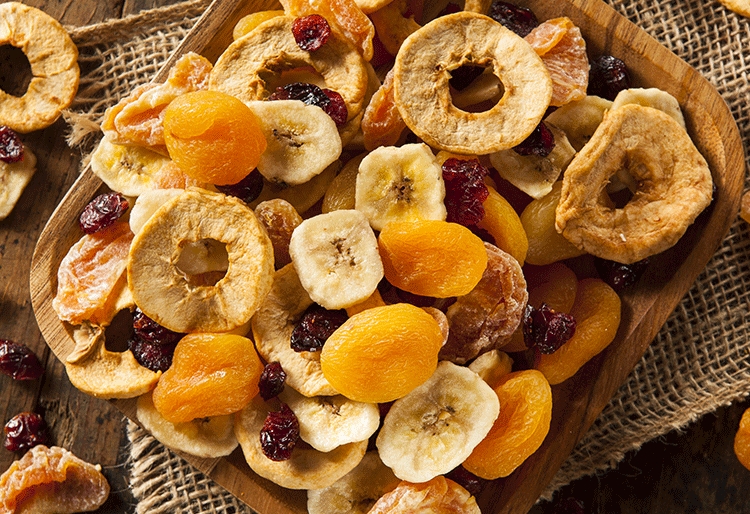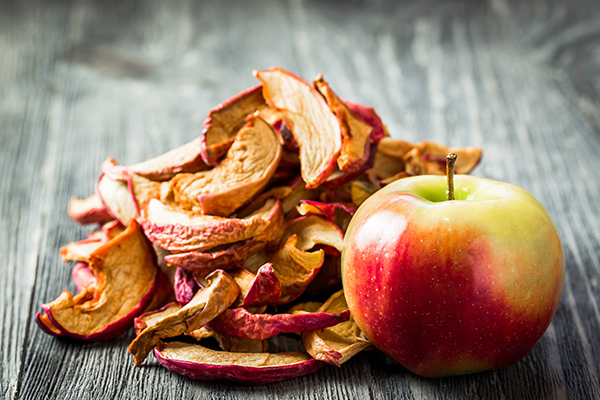Dried fruit: properties and benefits
Raisins are the most well-known dried fruit within our gastronomy but, currently, this type of food has grown and you can find almost any type of fruit in its dried state.
TRIED AND TESTED
Share

In recent years, apricots, dates, figs, grapes, plums, raisins, dried tomatoes, dried mango, bananas, apples, dried red berries, as well as vegetables like carrot, are being gradually incorporated into our daily diet. Their sweet flavour, the possibilities they offer in different dishes and the ease with which they can be stored make them a very attractive food.
Properties
During the drying process, whether domestic or industrial, some of the properties of the dried fruit are lost, but they still maintain many of their nutrients.
• High fibre content: they promote intestinal transit.
• Source of iron and potassium: particularly dried figs and raisins.
• Vitamins B and E and other antioxidants: help you to recover after intensive physical exercise.
• Concentration of carbohydrates (sugars): moderate consumption is recommended.
In the kitchen:
PAs they are so easy to carry around, they are usually eaten as snacks or desserts, for example, to accompany a natural yogurt. But they provide a great deal of flavour to more elaborate recipes, both in savoury and sweet dishes.
They add a special touch to meat stews by moderating the stronger flavours with their sweetness. They also fit in well with other textures and flavours in salads or sauces, and they naturally sweeten sponges and crème caramels.
1. Apricot purée
2. Chicken pie with apple and raisins
3. Date and ham stuffed mushrooms

How to dry fruit and vegetables at home
1. Wash and dry the pieces. Peel and cut into slices.
2. Pre-heat the oven to 100ºC with the top and bottom heat and fan functions on. Spread the slices on a tray and place them in the oven until they are crunchy. This may take several hours, and the time varies according to their water content. For example, courgettes will be ready before apples or pears.
3. Turn the oven off when the fruit is crunchy and wait until it has cooled completely. Carefully remove from the tray and store in an airtight container. Eat it quickly to avoid it going soft.






